Single Phase Pole Mounted Distribution Transformer: Optimizing Rural Power Delivery Efficiency?
Rural areas often struggle with unreliable power. This affects daily life and hinders development. How can we improve electricity supply in these regions?
Single phase pole mounted distribution transformers are key to enhancing rural power delivery efficiency. These transformers are designed to meet the unique needs of rural areas, offering a balance of performance, cost-effectiveness, and adaptability to challenging environments.
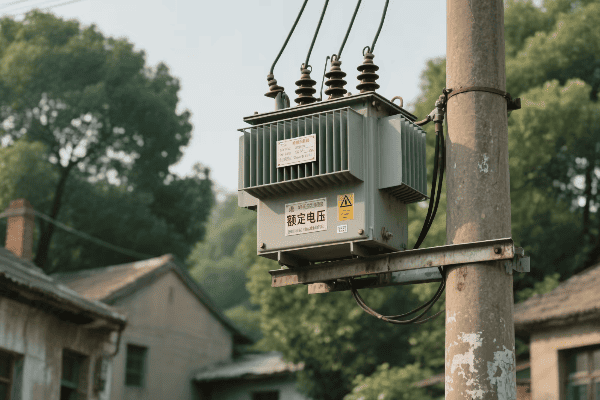
As someone who has worked extensively in the power distribution sector, I’ve seen firsthand the challenges of rural electrification. Let’s explore how these transformers are revolutionizing power delivery in rural areas.
Enhancing Energy Efficiency: Innovative Designs for Rural Single Phase Pole Mounted Transformers?
Power loss in rural areas is a big problem. It leads to higher costs and less reliable service. How can new transformer designs help solve this issue?
Innovative designs in single phase pole mounted transformers are significantly improving energy efficiency in rural power distribution. These new designs reduce power losses, improve voltage regulation, and increase overall system reliability.
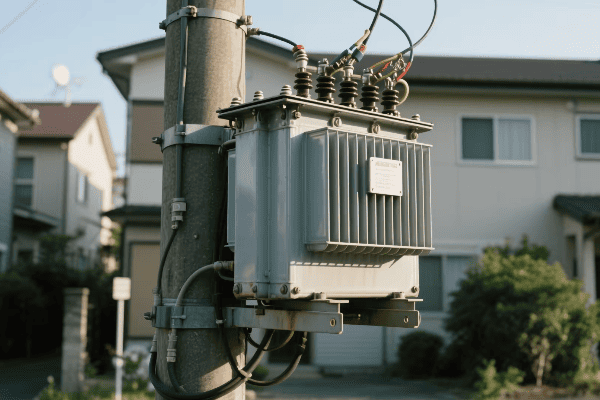
In my experience working with rural power systems, I’ve seen a remarkable evolution in transformer design. Let’s dive deeper into the innovations that are making a difference:
Core Materials: A Game-Changer in Efficiency
One of the most significant advancements has been in core materials. Traditional silicon steel cores are being replaced with amorphous metal cores. Here’s why this matters:
| Feature | Silicon Steel Core | Amorphous Metal Core |
|---|---|---|
| No-load losses | Higher | 70-80% lower |
| Efficiency | Good | Excellent |
| Cost | Lower | Higher initially, but cost-effective long-term |
I remember installing our first amorphous core transformer in a remote village. The reduction in power losses was immediately noticeable, and the long-term energy savings were substantial.
Improved Insulation Technologies
Another area of innovation is in insulation technologies. Modern transformers use advanced materials like:
- Nomex paper: Offers superior thermal resistance
- Ester fluids: Biodegradable and fire-resistant alternatives to mineral oil
These materials not only improve efficiency but also enhance the transformer’s lifespan and environmental friendliness.
Smart Design Features
Today’s rural transformers often include smart design features:
- Built-in surge protection devices
- Advanced cooling systems for better heat dissipation
- Modular designs for easier maintenance and upgrades
These features contribute to improved efficiency and reliability, which is crucial in rural settings where maintenance can be challenging.
Overcoming Rural Challenges: Adapting Single Phase Pole Mounted Transformers to Unique Environments?
Rural areas present unique challenges for power distribution. How can transformers be adapted to these specific conditions?
Single phase pole mounted transformers for rural areas are now designed to withstand harsh environmental conditions. They feature enhanced protection against lightning, extreme temperatures, and wildlife interference, ensuring reliable operation in remote locations.
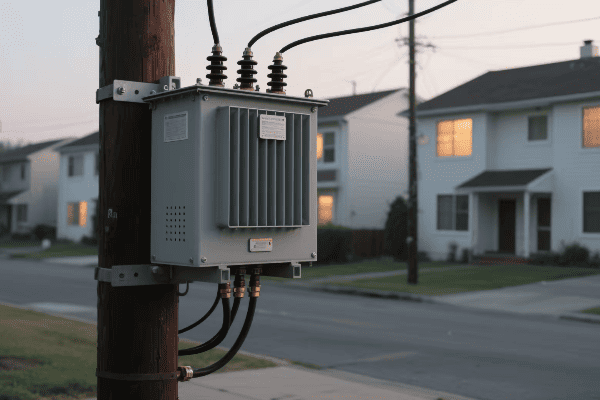
Having worked on projects in various rural settings, I’ve encountered a wide range of environmental challenges. Let’s explore how modern transformers are being adapted to overcome these:
Weather Resistance: Battling the Elements
Rural transformers often face extreme weather conditions. Here’s how they’re being adapted:
- Enhanced Sealing: Improved gaskets and seals prevent moisture ingress, a common issue in humid or rainy areas.
- UV-Resistant Materials: Outer casings now use materials that can withstand prolonged sun exposure without degradation.
- Ice and Snow Protection: In colder regions, transformers are designed with special covers to prevent ice buildup.
I once installed a transformer in a mountainous area prone to heavy snowfall. The new design with its sloped top and weather-resistant coating performed exceptionally well through harsh winters.
Wildlife Protection: Coexisting with Nature
Wildlife interference is a significant issue in rural areas. Modern transformers include:
- Animal Guards: Prevent small animals from causing short circuits
- Insulated Bushings: Reduce the risk of bird electrocutions
- Noise Reduction Features: Minimize disturbance to local wildlife
Corrosion Resistance: Longevity in Harsh Environments
Corrosion can significantly shorten a transformer’s lifespan. New adaptations include:
| Feature | Benefit |
|---|---|
| Galvanized Steel Tanks | Resist rust and corrosion |
| Powder Coating | Provides an additional layer of protection |
| Stainless Steel Hardware | Ensures long-term durability of components |
These features have dramatically increased the lifespan of transformers in coastal areas where I’ve worked, where salt air corrosion was previously a major issue.
Cost-Effective Solutions: Balancing Performance and Affordability in Rural Power Distribution?
Cost is often a major barrier in rural electrification. How can we ensure high-performance transformers remain affordable?
Modern single phase pole mounted transformers offer a balance of performance and affordability. Manufacturers are using innovative materials and production techniques to reduce costs while maintaining high efficiency and reliability standards.
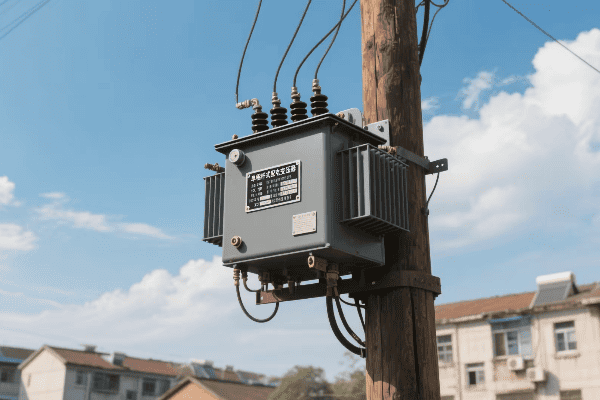
In my years of experience in the power sector, I’ve seen a significant shift towards more cost-effective solutions without compromising on quality. Here’s how the industry is achieving this balance:
Standardization: Reducing Costs Through Uniformity
One of the most effective ways to reduce costs is through standardization. This approach offers several benefits:
- Economies of Scale: Mass production of standard components reduces manufacturing costs.
- Simplified Inventory: Fewer unique parts mean lower inventory costs and easier maintenance.
- Faster Installation: Standardized designs allow for quicker and more efficient installation processes.
I’ve been involved in projects where standardization reduced installation time by up to 30%, significantly cutting labor costs.
Advanced Manufacturing Techniques
The industry is leveraging advanced manufacturing techniques to reduce costs:
- Automated Winding: Improves precision and reduces labor costs
- 3D Printing: Used for producing certain components, reducing material waste
- Lean Manufacturing: Optimizes production processes, reducing overall costs
Material Innovations
New materials are being developed that offer high performance at lower costs:
| Material | Application | Benefit |
|---|---|---|
| Aluminum Windings | Replacing copper in some designs | Lower cost, lighter weight |
| Hybrid Insulation Systems | Combining different materials | Improved performance at lower cost |
| Recycled Materials | Used in non-critical components | Reduces environmental impact and cost |
In a recent project, we used transformers with aluminum windings, which reduced the overall cost by 15% without compromising on efficiency.
Total Cost of Ownership (TCO) Approach
When considering cost-effectiveness, it’s crucial to look at the total cost of ownership:
- Initial Purchase Price: Often lower for modern, efficient designs
- Installation Costs: Reduced due to lighter weight and standardized designs
- Operational Costs: Lower due to improved efficiency and reduced losses
- Maintenance Costs: Decreased with more reliable and durable designs
- Lifespan: Extended lifespan reduces replacement frequency
By focusing on TCO, utilities can justify investing in higher-quality transformers that offer long-term savings.
Leveraging Technology: Improving Reliability of Single Phase Pole Mounted Transformers in Remote Areas?
Remote areas often suffer from frequent power outages. How can technology improve transformer reliability in these locations?
Advanced technologies are enhancing the reliability of single phase pole mounted transformers in remote areas. Smart monitoring systems, predictive maintenance algorithms, and remote control capabilities are reducing downtime and improving overall power quality.
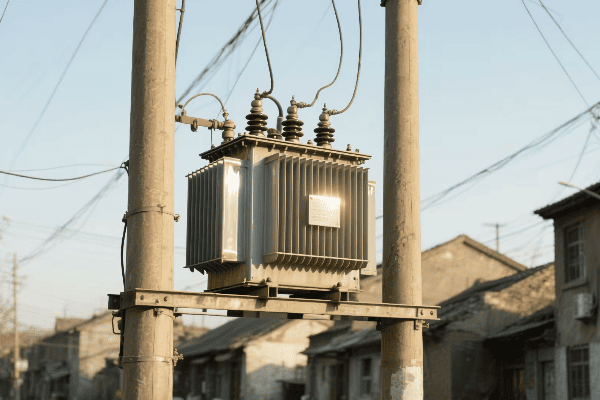
Throughout my career, I’ve witnessed a technological revolution in transformer management, particularly beneficial for remote areas. Let’s explore these advancements:
Smart Monitoring Systems: The Eyes and Ears of Remote Transformers
Smart monitoring systems have transformed how we manage transformers in remote locations:
- Real-time Data Collection: Continuous monitoring of key parameters like temperature, oil level, and load.
- Fault Detection: Immediate alerts for any abnormalities or potential issues.
- Performance Analytics: Long-term data analysis to optimize transformer operation.
I recall a project where smart monitoring prevented a major outage by detecting an oil leak early, allowing for timely intervention.
Predictive Maintenance: Staying Ahead of Problems
Predictive maintenance is revolutionizing transformer upkeep:
- AI-driven Algorithms: Analyze data patterns to predict potential failures.
- Condition-based Maintenance: Schedule maintenance based on actual transformer condition, not just time intervals.
- Lifespan Optimization: Extend transformer life by addressing issues before they become critical.
Remote Control and Automation
Remote control capabilities are particularly valuable in hard-to-reach areas:
| Feature | Benefit |
|---|---|
| Remote Switching | Ability to isolate transformers without on-site personnel |
| Automatic Voltage Regulation | Maintains stable voltage without manual intervention |
| Load Balancing | Optimizes power distribution across the network |
In a recent project, we implemented remote-controlled transformers in a mountainous region. This reduced response times to power issues from days to minutes.
Communication Technologies
Advancements in communication technologies are crucial for these smart systems:
- Cellular Networks: 4G/5G connectivity for real-time data transmission.
- Satellite Communication: For areas without cellular coverage.
- Mesh Networks: Creating resilient communication networks between transformers.
Cybersecurity Measures
With increased connectivity comes the need for robust cybersecurity:
- Encrypted Communications: Protect data transmission from interception.
- Access Control: Ensure only authorized personnel can control transformers.
- Regular Security Updates: Keep systems protected against evolving threats.
Future-Proofing Rural Grids: Scalable Single Phase Pole Mounted Transformer Solutions for Evolving Demand?
Rural energy needs are changing rapidly. How can transformers adapt to future demands?
Scalable single phase pole mounted transformer solutions are key to future-proofing rural grids. These transformers are designed to accommodate growing energy demands, integrate renewable sources, and support smart grid technologies.
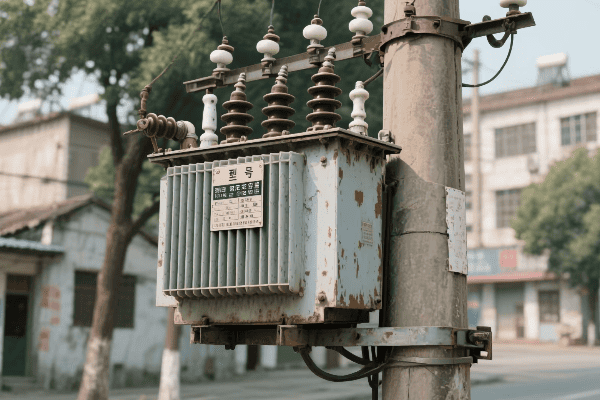
As someone who has been in the industry for years, I’ve seen the rapid evolution of rural energy needs. Let’s explore how transformers are being designed to meet future challenges:
Modular and Upgradable Designs
The future of rural transformers lies in their adaptability:
- Modular Components: Allow for easy upgrades as demand increases.
- Scalable Capacity: Transformers that can be easily scaled up to meet growing power needs.
- Plug-and-Play Features: Simplify the process of adding new features or technologies.
I recently worked on a project where we installed modular transformers in a developing rural area. As the community grew, we were able to upgrade the transformers’ capacity without replacing the entire unit, saving significant costs.
Integration with Renewable Energy Sources
Future-proof transformers are designed to work seamlessly with renewable energy:
- Bi-directional Power Flow: Support for both traditional and distributed generation.
- Voltage Regulation: Advanced systems to manage fluctuations from renewable sources.
- Energy Storage Integration: Compatibility with battery storage systems for improved grid stability.
Smart Grid Readiness
Transformers are becoming key nodes in smart grid infrastructure:
| Feature | Benefit |
|---|---|
| Advanced Metering Infrastructure (AMI) | Enables precise monitoring and billing |
| Demand Response Capabilities | Allows for dynamic load management |
| Power Quality Monitoring | Ensures stable and clean power supply |
In a recent smart grid pilot project, these features allowed for a 20% improvement in overall grid efficiency.
Adaptability to New Technologies
Future-proof transformers are designed with flexibility to incorporate emerging technologies:
- Electric Vehicle Charging: Ready for increased demand from EV adoption in rural areas.
- IoT Integration: Prepared to be part of the broader Internet of Things ecosystem.
- AI and Machine Learning: Capable of supporting advanced analytics and autonomous operations.
Environmental Considerations
Long-term sustainability is a key aspect of future-proofing:
- Eco-friendly Materials: Use of biodegradable oils and recyclable components.
- Reduced Carbon Footprint: Designs that minimize environmental impact throughout the lifecycle.
- Noise Reduction: Important for residential areas as rural populations grow.
Conclusion
Single phase pole mounted distribution transformers are crucial for efficient rural power delivery. They combine innovative design, environmental adaptability, cost-effectiveness, advanced technology, and future-ready features. These transformers are key to powering rural development and improving quality of life.
Free CHBEB Transformer Catalog Download
Get the full range of CHBEB transformers in one catalog.
Includes oil-immersed, dry-type, pad-mounted, and custom solutions.
Quick Message
Request A free quote
We'd like to work with you
- +86 15558785111
- [email protected]
- +86 15558785111
What We Do
CHINA BEI ER BIAN (CHBEB) GROUP, with 218 million in registered capital, originated from Beijing Beierbian Transformer Group. Headquartered in Beijing for R&D, it operates major production bases in Nanjing and Yueqing, producing high-quality products.
Latest Product
address
BeiJing
No 3,RongJing East Road,BeiJing Economic Technological Development Area,BeiJing,China
JiangSu
No 7️Xiangfeng Road,Jiangning,NanJing,JiangSu,China
WenZhou
No.211, Wei 16 Road, Industrial Zone, Yueqing, Wenzhou, Zhejiang, China.
XiangYang Industrial Zone ,YueQing,WenZhou,ZheJiang,China
contact us
- [email protected]
- +86 13057780111
- +86 13057780111
- +86 15558785111
Copyright © Bei Er Bian Group


